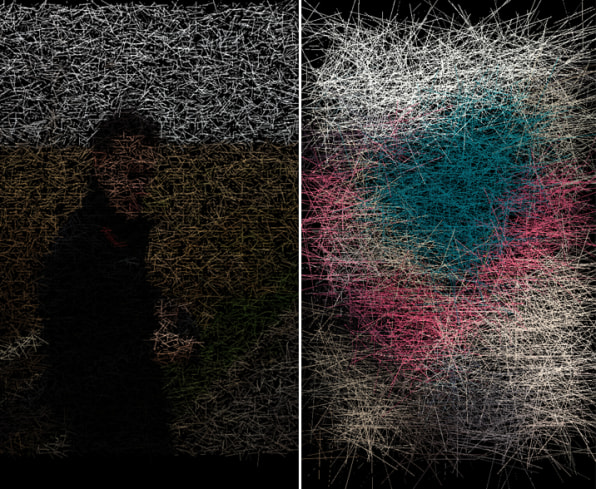Best Art & Design Apps 2018
Most photos we take document reality. Just look at Instagram. It's full of pictures of ourselves, our friends, our pets, and our dinners. But just as art has long since ventured out from the representational, couldn't we do the same thing with our smartphone photography?
That's the question posed by User Studio's Matthieu Savary, creator of the free iPhone app Pixel Is Data. It's a photo-filter set driven by a concept Savary calls "non-deterministic pixel organization." These wild images are actual CMOS sensor data from real photographs. But rather than add a few vintage effects to your latest picture, Pixel Is Data allows you to rip into the core of the photo's information, rearranging pixels by tone and color value, stretching, blurring, and triangulating reality in a strange cross of expressionism and impressionism, new aesthetic and social media.
"One thing is always overlooked in proper digital cameras and in photo apps on smartphones: the order and shape of pixels could be changed. Though they never are," Savary tells Co.Design. "Even if a CMOS camera module is going to gather data about the real world in the 'right' order (i.e. the figurative way) … there is nothing less truthful in an image produced by an algorithm that's going to reorganize the pixels of a photo in the order of their RGB components than in the corresponding, figurative image.

"The RGB-organized image–which, by the way, holds the exact same pixels–brings forward new information such as the density of a color or the general luminosity of the picture."
Savary's arguments get to the core of the last century or so of art criticism, but they also directly challenge cellphone photographers to think beyond the Instagram filter. Digital cameras, full of all sorts of helpful exposure, color, and autofocus features, have raised the bar of consumer photography to pro levels, making us so competent at representational work that even a really amazing Instagram feed is somewhat typical. By considering the photo anew, Savary would like to enable photographers to push the medium forward, to rethink "what photography looks like" and to challenge the status quo by inundating Instagram with algorithmic art.
Because let's face it, our selfies could really benefit from a fresh approach.
Download it here.
Best Art & Design Apps 2018
Source: https://www.fastcompany.com/1672576/create-amazing-pixel-art-with-this-free-iphone-app
Posted by: wardmoseve.blogspot.com

0 Response to "Best Art & Design Apps 2018"
Post a Comment